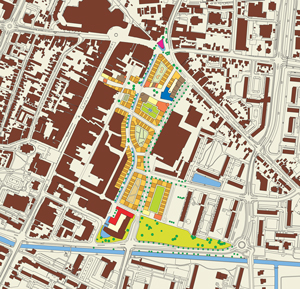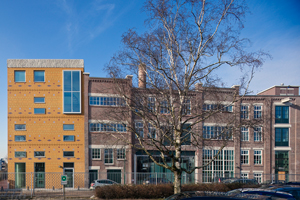Festival dell'architettura
Ti trovi in: Home page > Progettare il costruito strategie architettoniche per la città compatta > OLANDA - Veenendaal, Centrumgebied oost Veenendaal (2001), Soeters Van Eldonk architecten
OLANDA - Veenendaal, Centrumgebied oost Veenendaal (2001), Soeters Van Eldonk architecten

A pleasant city is not a mono- functional city. In the combination of use, urban live will be created. Because no building stands alone in such a series of images, we search in our urban design assignments for expressive links: between buildings, between buildings and public spaces, and between the city and the building. We created characteristic examples of this concept of “figurative urban design” in the redevelopment and expansion of the center of Nijmegen, Amsterdam, Nootdorp, Spijkenisse, Bergen op Zoom, Zaanstad and Veenendaal.
Soeters van Eldonk architects developed a master plan for the center of Veenendaal, Brouwerspoort, where mainly small scale, atmosphere, residential quality and character are paramount. For the public space we aim for a compact urban structure with small streets and squares. In our plan we created a strong connection to the shopping structure of the existing city center. This intended atmosphere is also achieved through the reintroduction of a canal. Water is an important element in most of our urban plans in the Netherlands. It not only brings a pleasant atmosphere in the city; it also is a way to prevent flooding by collecting the rainwater on location.
The search for junctions with the typology of the old Veenendaal has lead to special thought for the size and scale of the existing fabric. And with the careful way of looking at the historically valuable buildings in the area we have achieved to convert the former Hollandia wool factory into a culture cluster, housing the library, the historic museum, the historical society and the art-lending facility.
Routing and program are the major components of the master plan of Veenendaal. A shopping circuit is created, shaped as a double eight, which connects to the existing pedestrian routes, with a central curved canal that operates as the new veine in the north-south direction. The heart of the planning area lies to the north, shaped as a new double triangular square. From this square a passage made to the existing main shopping street pierces through. The old city area of Veenendaal has converted in an intricate structure of curved streets and confined spaces and squares instead of a open space with large buildings in which you get lost.
While designing the plan for Veenendaal there has always been called for additional rich and varied program and stressed that the aim should be to actually create a vibrant downtown and not only shops and homes, but also cultural facilities. Now the new square will not only include the culture cluster in the former wool factory it is also supplemented by a music school and various types of bars and restaurants.
Veenendaal is one of our projects which shows us how well it works for the public space to shrink to a minimum. In the combination of a compact public space and a rich mixture of housing, shopping, culture, offices and restaurants we have found the best solutions. This plan also shows the importance of making as many doors to the public spaces and minimizes the creation of back sides. The ultimate aim of all our city plans is for the modern distinctions between “living”, “working” and “recreation” to fall away, and for people to have a sensation of being permanently on holiday.









